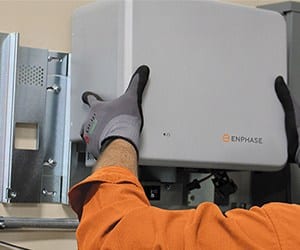The battery storage industry is warning that the market for lithium-ion battery installations could be killed even before it has taken off if proposed new Australian standards do not fall in line with international installation guidelines.

As we reported last month, the draft from Standards Australia will effectively ban lithium-ion battery storage inside homes and garages after declaring it to be a category 1 fire risk. It will mean any installations will need to be built in a concrete bunker, making it impossible for many homes and costly for others.
The proposals have been described as a massive case of over-reach, even by groups whose members form part of the standards advisory committee. Some have suggested that the standards process – which normally takes several years – has been rushed.
Most of all, they point out that the new standards do not reflect international practice, nor are they based on any known threat. Home battery storage systems would be banned, while lithium-ion batteries for laptops, mobile phones and other devices, electric vehicles, and gas bottles are not.
Glen Morris, from the Australian Storage Council, says even the prospect of these new rules could see a dent in the market, just as it begins to take off with the release of the new Tesla Powerwalls, and new models and products from the likes of LG Chem, Sonnenbatterie, BYD and many others.
He says that if the new drafts are actually enacted, it would have a devastating impact on the industry. This, in turn, has major implications for Australia’s energy future.
The CSIRO and the Australian Energy Market Operator have both pointed to the crucial role that battery storage installed in homes and businesses can play in a future grid ever more dependent on renewable energy sources.
But if these standards are unchanged, that market – estimated by the CSIRO at up to 85GWh by 2040 – and others as crucial to help businesses avoid soaring demand charges, will simply fail to materialise.
The main issue is that all lithium batteries are classed as Fire Hazard Class 1 and the principal clause that is causing the problem is 4.5.3.
Clause 4.5.3 says:
The installation requirements for battery types shown as fire hazard level 1 in Table 3.1, are as follows:(a) Shall not be installed inside a domestic dwelling.(b) Shall not be installed within 1 m of any access/egress area.(c) Shall not be installed under any part of a domestic dwelling.
That means they can’t be installed inside any building on a domestic residence and if outside they must not be less than 1m from a structure, and must be in a huge 3m x 2m + eaves fire shelter.
He is urging the industry to respond to the drafts on the Standard Australia website. Submissions are due by August 15. This call is expected to be taken up with gusto by the solar and storage industry and consumer associations.
The industry has already made its views known, describing the proposals as ridiculous and extreme. Some of the biggest battery storage manufacturers in the world, LG Chem and Sonnenbatterie, describe the new proposals as over-kill.
Morris says the issue can possibly be addressed by allowing an exemption to those battery storage products that fit into international standards.
The European standard, known as IEC 62619:2017, sets out in detail the operating requirements of battery storage devices, but does not go to the extreme of banning them outright from homes and buildings.
The US standard, which is similar to IEC 62619, cannot be adopted by Standards Australia because there is no commercial arrangement between the two organisations.











